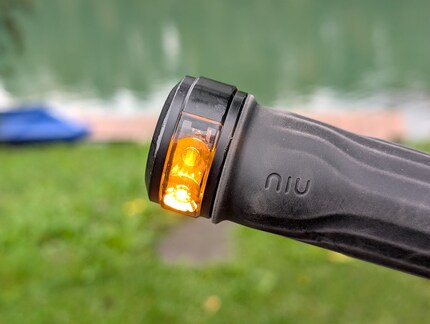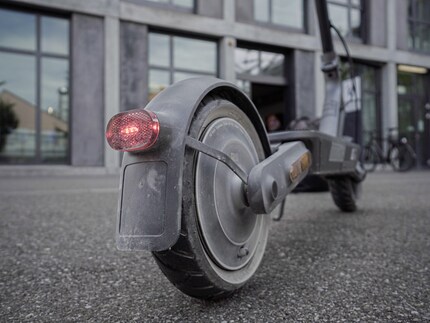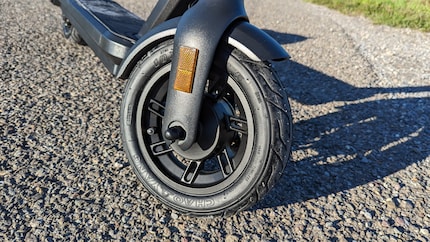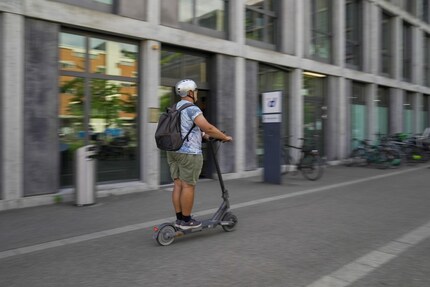
Background information
New electric motor scooter rules: how fast can you ride and how many passengers are you allowed?
by Lorenz Keller

The legal requirements for scooters with electric motors are complicated – and a lot of people are unaware of them. I’ll explain what applies in Switzerland, what problems there are and what changes may be coming soon.
A survey of police forces in the major German-speaking cantons of Switzerland shows that e-scooters regularly keep law enforcement officers busy – partly because the number of them has increased.
Most cantonal police forces don’t keep separate statistics on so-called trend vehicles. The fact that in Basel-Stadt alone there are around 200 prosecutions a year gives the impression there’s a need to catch up in this area.
One problem is certainly the rather complicated regulations around a «light motorcycle». This legal vehicle subcategory includes both e-bikes and e-scooters. You can also find all the details on the website of the Federal Roads Office (FEDRO) (page in German). Here are the most important rules.

If you want to ride a more powerful and faster two-wheeler, you’ll need a vehicle in a different class, such as «motorcycle». Classic mopeds and fast e-bikes are categorised here. The biggest differences: these vehicles need a type approval, a licence, a licence plate and require a helmet.

One point always causes debate. As FEDRO puts it, brakes have to be operational at all times under all operating conditions – even with full or discharged batteries in the case of electric brakes, for example.
Many e-scooters have a friction brake and an electronic brake. The latter only works when the scooter is switched on and supplied with power. Manufacturers as well as the TCS, which tests and recommends many scooters, interpret the regulations in such a way that this doesn’t only refer to friction brakes, and that a vehicle with only one friction brake is allowed. There’s no specific regulation in the Road Traffic Act itself.

On request, FEDRO clarified the regulations: both brakes must guarantee operational safety in accordance with the Road Traffic Act and have to be powerful in accordance with the Ordinance on the Technical Requirements for Road Vehicles (VTS) on top of guaranteeing deceleration values listed in the appendix (both pages in German).
The Federal Roads Office doesn’t test vehicles itself; this is done by recognised test centres (page in German). From FEDRO’s point of view, the aim of this regulation is to encourage deactivation of the electric motor before a vehicle’s battery is fully discharged. Note, it should still be able to carry out a few more braking operations with the electromagnetic brake. This also applies to lighting, which also has to remain active for a certain period of time.
Incidentally, brakes were never an issue in the police’s survey responses, in contrast to other points such as speeding or underage riders.
What’s easy to forget is that anyone riding an unlicensed e-scooter risks both a fine as well as problems with their insurance company in the event of an accident. On request, AXA summarised the possible consequences.
If there’s only property damage, liability insurance comes into play. However, the following applies: liability insurance doesn’t cover damage caused by the use of vehicles that aren’t authorised by law or the authorities. In other words, if you damage a car with an unlicensed e-scooter, for example, you have to pay for the repair yourself.
This also applies if the scooter complies with the rules but was driven by a child under the age of 14, for example. Ultimately, the parents are liable here.
Accident insurance is a little more complicated. Benefits can be reduced if – to put it simply – someone is significantly at fault for an accident (gross negligence), exposes themselves to particular dangers (hazards) or was committing a crime or offence. Of course, this doesn’t just apply to e-scooters, but generally.
In the case of an unauthorised vehicle, all three situations mentioned can apply. The extent of the reductions depends on the individual case. It’s also clear that if your own behaviour contributes to an increased accident risk, it’ll lead to greater reductions. Examples of this are riding at too high a speed or riding in pairs on a scooter.

All police forces surveyed see a need for action when it comes to e-scooters. They have specific wishes as to where regulations should be changed.
Trend vehicles often lead to political initiatives. In the city of Zurich, a local councillor submitted a written question (page in German) to find out what the police are doing about speeding e-scooters and how the sale of such vehicles can be restricted.
Legislation has been under revision on a national level since summer 2023. An explanatory report on the consultation (page in German) already sets out the changes that are being sought.
Consultation on these proposals has finished. The Federal Council will probably decide in the next few weeks which further steps will be taken to revise road traffic legislation and which of the proposals will be implemented. These could then come into force as early as next year.
What rule changes do you think make sense for e-bikes and e-scooters? Let us know your thoughts in the comments!
Gadgets are my passion - whether you need them for the home office, for the household, for sport and pleasure or for the smart home. Or, of course, for the big hobby next to the family, namely fishing.
Interesting facts about products, behind-the-scenes looks at manufacturers and deep-dives on interesting people.
Show all
Background information
by Lorenz Keller

Background information
by Philipp Rüegg

Background information
by Lorenz Keller